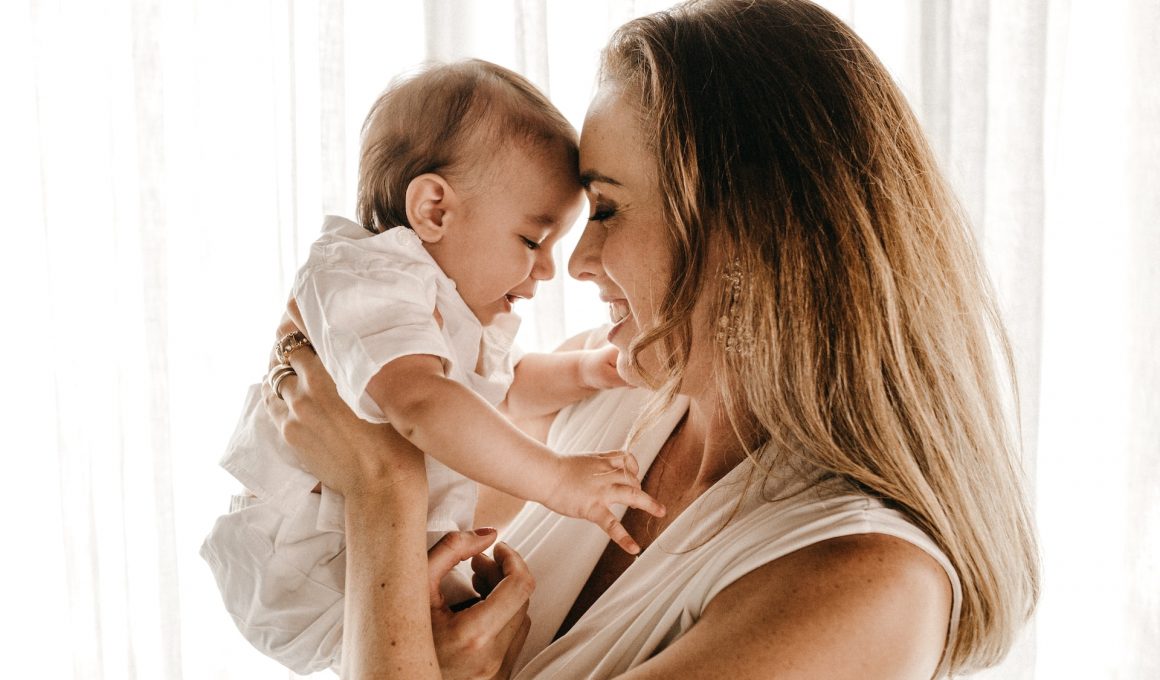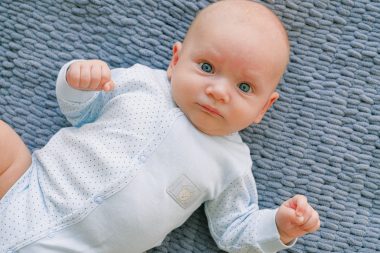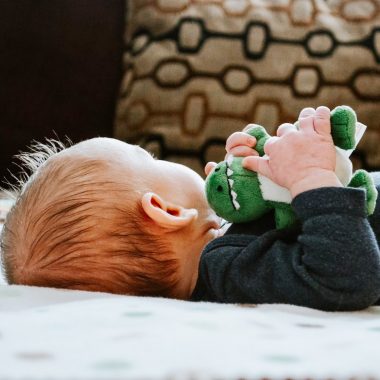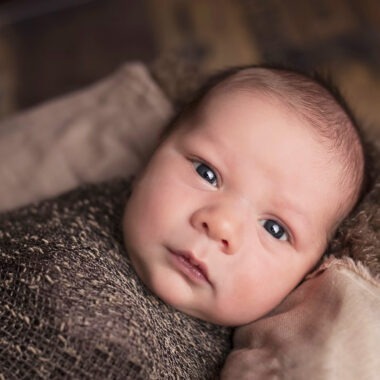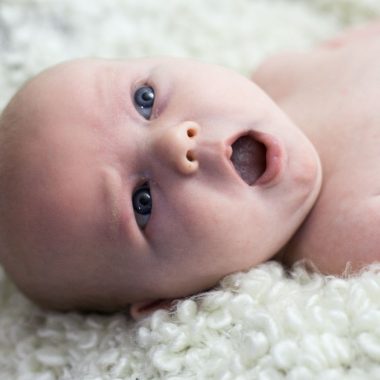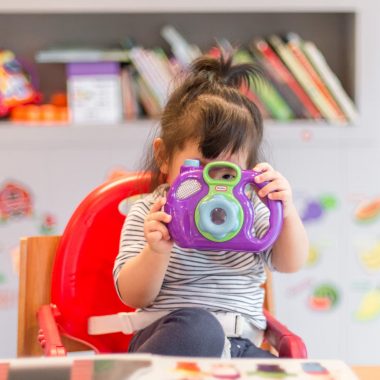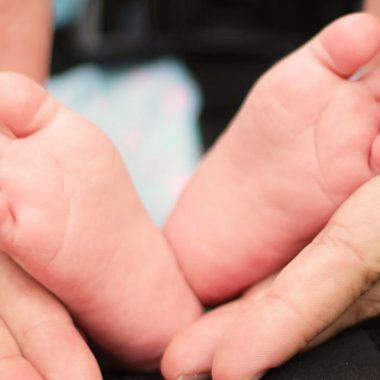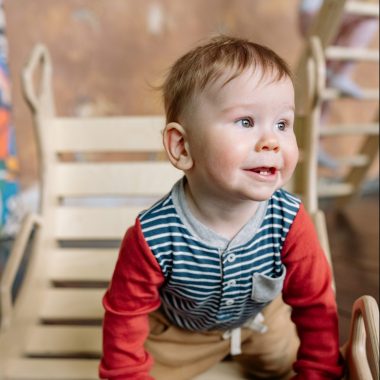Separation anxiety in babies is a common and regular part of development.
Separation anxiety usually begins when a baby begins to understand that they are a separate person from you. This is usually around the same time they become mobile and begin to explore the world away from their attachment figure.
This freedom and desire to explore is accompanied by some anxiety over the realization that they aren’t attached to you, the person they’ve relied on for every need.
Around this age, a baby is also learning about object permanence. They learn that when an object is out of sight, it continues to exist.
If you leave the room and your baby cries, this is their way of signaling that they want you to come back.
It can be difficult to part from a baby with separation anxiety but there are different ways to adjust and get the situation under control. Using simple techniques you can reduce your baby’s stress levels as they ease into this new chapter of life with ease and peace.
In this article you will read detailed information about separation anxiety.
Table of Contents
What is separation anxiety?
Separation anxiety is a baby’s fear of being away from their parents or caregivers. All babies experience it to some degree.
It is a normal stage of emotional development that starts when a baby begins to understand that they are a separate person from you. Moreover this is also the time when a baby’s understanding of object permanence begins i.e. things and people exist even when you cannot actively looking at them.
A baby can show signs of separation anxiety as early as 4-5 months. More robust separation anxiety usually begins when the baby is 9 months old.
Separation anxiety can be distressing both for infants and caregivers. But the good news is that it is a sign your baby is securely attached to you. Infants and children desire closeness to their caregiver and they are built this way in order to survive.
Children actually build up the confidence to be away from their caregivers by first feeling close, safe and secure with them. This is important for social and emotional functioning throughout life.
Therefore separation anxiety is a normal part of childhood.
ALSO READ: Newborn Sleep Basics: What To Expect From 0-3 Months
What are some signs of separation anxiety in babies?
Potential signs of separation anxiety in a baby or toddler can include:
- Crying when a caregiver leaves the room.
- Crying or becoming distressed when the caregiver leaves them with someone else.
- Clinging to the caregiver, especially in new or unfamiliar situations.
- Fear of strangers.
- A strong preference for one caregiver over another.
- Requiring a caregiver to remain nearby so that they can fall asleep.
- Waking up at night and crying for their caregiver.
- Being unable to go to sleep without receiving comfort from the caregiver.
In some children, separation anxiety manifests as physical symptoms, such as:
- Headaches.
- Stomach aches and/or vomiting.
- Difficulty sleeping.
It is important to remember that these are all normal behaviors, an important developmental milestone and most importantly, nothing to worry about.
Supporting your baby or child when they are upset and providing comfort will help them feel safe and secure.
When does separation anxiety start in babies?
Separation anxiety develops after an infant perceives object permanence.
Some babies begin understanding object permanence and experiencing separation anxiety as early as 4-5 months of age. Most babies’ separation anxiety peaks at around 9 months of age.
The toughest stage of separation anxiety is usually between 10-18 months of age.
Some infants do not experience separation anxiety until they are slightly older, while some only experience it very mildly.
ALSO READ: 7 Expert Tips To Help Your Baby Sleep Through The Night
What causes separation anxiety in babies?
Separation anxiety is a sign of your baby’s growing intelligence since they realize how dependent they are on you. This anxiety can be attached to grandparents or others who care for them closely.
Your baby’s growing awareness means that they now understand the depth and strength of the bond they have with you, and don’t feel safe when you are not around. They may also feel unsafe or upset in new situations or with new people, even if you are there.
At certain stages of development and during particular life changes, babies and children need familiarity more than usual. For example, before the age of 6 months, babies are usually content being with any adult who comforts them.
But, then they learn that people and objects continue to exist even when they’re out of sight.
By making very loud noises, babies learn to call back their mummy or daddy back again and feel content and safe once more. This craving to be close to parents increases over the next 4-6 months as babies begin to appreciate the potential risks of being alone.
Separation anxiety can also emerge when a child starts nursery or school. Having gotten used to being at home with mummy or daddy, the challenge of being in a big, noisy, busy environment brings back all the worries about being apart. So children revert back to crying and being clingy in order to keep their parents close.
How long does separation anxiety last?
According to different studies, separation anxiety typically continues until the age of 3 years.
It begins to fade as the child develops a greater understanding that their caregiver will return. However, some children can continue to experience separation anxiety for longer periods.
When separation anxiety persists into later childhood, it is known as childhood separation anxiety disorder (CSAD). This is a mental health condition which is unusual for the child’s development. If you think your child’s anxiety is continuing for an extended period of time, beyond what is considered typical, it may be time to get a consult.
Is separation anxiety healthy in babies?
Experts share that separation anxiety is a perfectly normal part of development.
Yes, sometimes it can be unsettling for the parent or the caregiver but it indicates secure attachment.
Your baby’s fussing and crying when you leave the room means that they have a strong bond and sense of attachment to you. So separation anxiety is healthy to a certain degree.
ALSO READ: 8 Tips to Help Your Baby Self-Soothe to Sleep
Can a 6 month old have separation anxiety?
Separation anxiety can begin when a baby is as young as 4 months old, but generally babies won’t show symptoms of more robust separation anxiety until they are between 6 and 9 months. This is usually when their sense of object permanence starts to develop.
How to handle separation anxiety during daytime?
Separation anxiety can be hard to handle. And with many stages of development patience is the key. You should never ignore a baby with separation anxiety.
These strategies will help you with handling the situation.
- Timing matters: Try not to start daycare with an unfamiliar person when your baby is between the ages of 8 months and 1 year. Also, try not to leave when your child is tired, hungry, or restless. If at all possible, schedule your leaves after naps and mealtimes.
- Practice: Practice being apart from each other, and introduce new people and places gradually. If you plan to leave your child with a relative or a new babysitter, invite that person over in advance so they can spend time together while you’re in the room. If your baby is starting at a new daycare center or preschool, pay a few visits there together before a full-time schedule begins. Practice leaving your baby with a caregiver for short periods so that they can get used to being away from you.
- Establish a routine: Babies like routines for baths, bedtime and more. So create one for your leave and return. For example, you can sing a short song when you depart, and then give them a long hug and a new song when you’re back.
- Stay calm and consistent: Stay calm and show confidence. Reassure them that you’ll be back and explain when you’ll return using concepts kids will understand (such as after lunch). Give your full attention when you say goodbye, and when you say you’re leaving, mean it. Don’t offer fake goodbyes as that willonly make things worse.
- Leave your baby with something comforting: Your baby might like to have something they identify with you like a favorite toy or something with your scent on. This can reassure them while you are away.
- Don’t feel guilty: Separation anxiety is perfectly normal and a sign of the strong and healthy relationship you have with your baby. So you have absolutely nothing to feel guilty about. It will not last forever, and soon you’ll be dropping your baby off at nursery – or for an hour or so with a friend – without them crying.
- Follow through on promises: It’s important to make sure that you return when you have promised to. This is critical because this is how your child will develop the confidence that they can make it through the time apart.
- Check on your baby: It’s ok to call the sitter after your leave to get a report about your baby’s situation. But don’t attempt to talk with your baby over the phone or on FaceTime — it could be confusing since you’re not in the room.
How to deal with separation anxiety at night
A baby between 8 and 12 months of age may also show signs of separation anxiety at night by waking up and crying out for you.
Providing comfort and reassurance during the day may help ease nighttime separations. However, often a little extra support is necessary at bedtime to help children feel secure before they fall asleep.
ALSO READ: How To Sleep Train My Baby With Invidyo
Below are some suggestions that you might find helpful at night:
- Stick to a bedtime routine.
- Ensure that your baby has a comforting object with them.
- Stay calm and relaxed while saying goodnight. Always keep in mind that children can detect their caregivers’ moods.
- Avoid sneaking out after they fall asleep – this can cause distress if they wake up again
- Comfort your baby if they wake up by rubbing or patting them until they calm down, then leave.
- When possible, avoid taking them out of the bed and rocking them to sleep.
References: chop.edu, medicalnewstoday.com, raisingchildren.net.au, healthychildren.org, whattoexpect.com


